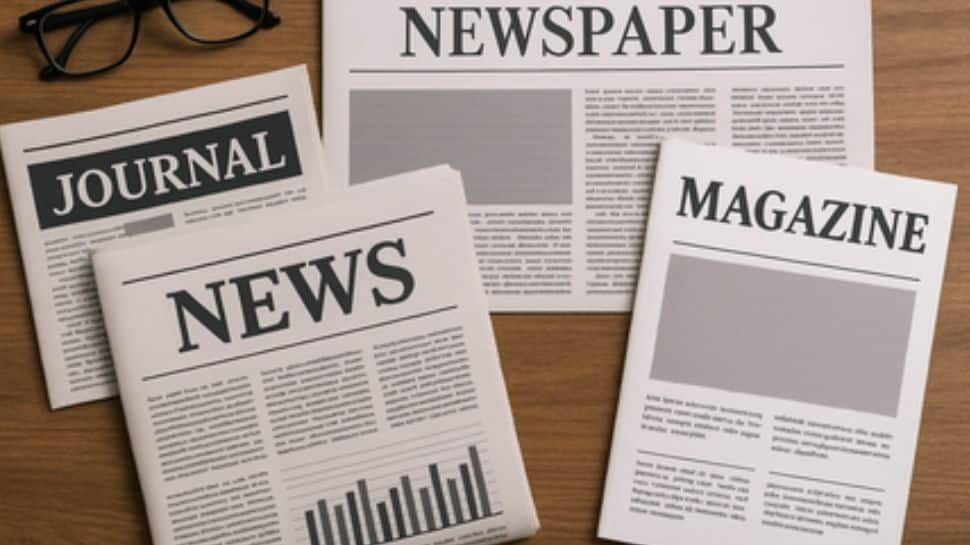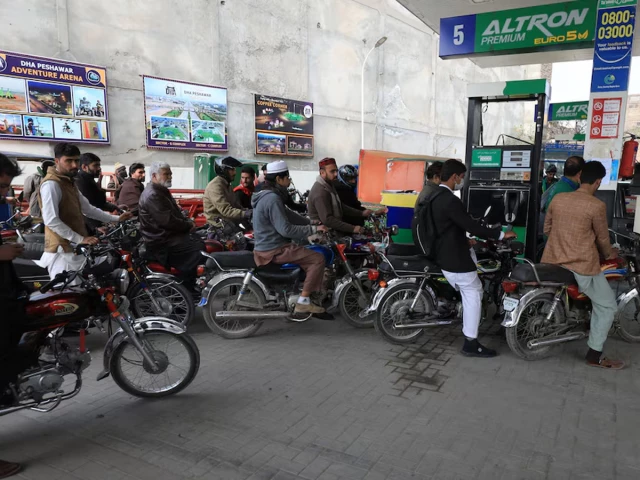Business
Petrol price kept unchanged at Rs265.45 per litre for the next two weeks – SUCH TV

The federal government on Saturday kept the petrol price steady at Rs265.45 per litre for the next fortnight, following recommendations from the Oil and Gas Regulatory Authority (Ogra).
A notification from the Finance Division stated, “The government has revised petroleum product prices based on inputs from Ogra and the relevant ministries.”
However, the government raised the price of high-speed diesel (HSD) by Rs6, bringing it from Rs278.44 to Rs284.44 per litre.
Earlier, on November 1, the government had increased petrol by Rs2.43 per litre to Rs265.45, while HSD was raised by Rs3.02 to Rs278.44 for that fortnight.
Industry sources had indicated earlier this week that petroleum prices could surge by up to Rs9.60 per litre starting November 16, mainly due to a shortage of diesel in the Gulf region.
Pakistan, which imports most of its diesel from Kuwait, is experiencing supply constraints after maintenance work at one of Kuwait’s refineries.
Originally scheduled for early November, the shutdown has now been extended by 15 days, further tightening regional diesel supply.
Additionally, production at Kuwait’s Al-Zour refinery, one of the largest in the region, has been partially affected, with only two of its three units running at full capacity.
The reduced output of HSD from these facilities has driven up international prices, directly affecting Pakistan’s import costs. Based on 13 days of price data, HSD was projected to rise by Rs9.60 per litre — a 3.4% increase — taking the price to Rs288.04 per litre from the current Rs278.44.
However, with two days of global trading data still pending, international oil prices may fluctuate further, meaning the final adjustment in POL prices could vary from the current estimates.
In contrast, the petrol prices are likely to see a marginal decrease of Rs1.96 per litre, with the new rate expected to settle at Rs263.49 per litre, compared to the current Rs265.45, reflecting a 0.7% drop.
Kerosene was also projected to surge by Rs8.82 per litre to Rs193.87, from Rs185.05 (an increase of 4.8%), while light diesel oil was likely to increase by Rs7.15 per litre to Rs171.13, from Rs163.98 (an increase of 4.4%).
Business
Centre Raises Print Media Advertisement Rates By 26% To Support Industry

New Delhi: The Central government on Monday announced a 26 percent hike in advertisement rates for print media and introduced a premium for colour advertisements, aiming to strengthen the sector amid rising costs and growing competition from digital platforms.
As per the revised structure, black-and-white advertisement rates for newspapers with a circulation of one lakh copies have been increased from Rs 47.40 to Rs 59.68 per sq. cm. The government has also accepted the committee’s recommendations on offering premium rates for colour ads and preferential placement, the Information & Broadcasting Ministry said in a statement.
The ministry noted that higher government ad rates will provide crucial revenue support to newspapers, helping them sustain operations, maintain quality journalism, and promote local news coverage at a time when input costs—particularly newsprint—have surged.
Strengthening financial stability, the statement added, will enable print media organisations to invest in better content and continue serving the public interest effectively.
The Central Bureau of Communication (CBC), the nodal agency for government publicity across media platforms, last revised print advertisement rates in January 2019 based on the recommendations of the 8th Rate Structure Committee, with the rates valid for three years.
To review the structure afresh, the 9th Rate Structure Committee, chaired by AS&FA (I&B), was set up on November 11, 2021. Between November 2021 and August 2023, the committee engaged with major associations representing small, medium and large newspapers—including the Indian Newspaper Society (INS), All India Small Newspapers Association (AISNA), and Small-Medium-Big Newspapers Society (SMBNS).
The panel examined key cost factors such as WPI inflation in newsprint, imported newsprint prices, wage costs, general inflation trends, and other production-related expenses before submitting its recommendations on September 23, 2023.
According to the government, the upward revision of advertisement rates brings print media compensation closer to market realities and acknowledges its continued relevance in a diversified media ecosystem. The move, it added, will help improve the reach and effectiveness of government communication efforts across the country.
Business
Fiscal roadmap: Finance Commission submits report for 2026-31; formula for Centre-state tax share sent to President Murmu – The Times of India

The 16th Finance Commission on Monday submitted its report for the five-year period 2026-31 to President Droupadi Murmu, marking a key step in finalising the formula that will determine how central taxes are shared with states, PTI reported.The panel, chaired by Arvind Panagariya, had been granted a one-month extension from its original October 31 deadline. “Members of the 16th Finance Commission, led by its Chairman, Dr Arvind Panagariya, called on President Droupadi Murmu and submitted the Commission’s report for 2026-31,” Rashtrapati Bhavan said in a post on X.Mandated to recommend the devolution formula and grants-in-aid beginning 2026-27, the commission travelled across all states and Union Territories before finalising its views on tax sharing, revenue augmentation and fiscal needs.
The panel includes full-time members Annie George Mathew and Manoj Panda, while SBI Group Chief Economic Advisor Soumya Kanti Ghosh and RBI Deputy Governor T. Rabi Sankar serve as part-time members.Along with tax devolution, the commission has examined the framework for financing disaster management, reviewing the funds created under the Disaster Management Act, 2005.Set up on December 31, 2023, the constitutional body succeeds the 15th Finance Commission headed by N.K. Singh, which had recommended that states receive 41% of the divisible pool between 2021-22 and 2025-26 — the same share proposed earlier by the 14th Finance Commission.According to Budget 2025-26 estimates, the Centre is expected to transfer Rs 14.22 lakh crore to states as their tax share out of a budgeted Rs 42.70 lakh crore in total tax receipts.Successive commissions have relied on weighted criteria such as population, area, income distance, demographic performance, fiscal effort and forest cover to determine state shares — an issue that has often triggered friction between the Centre and Opposition-ruled states. Southern states, in particular, have objected to population-linked weightage, arguing that it disadvantages them for achieving lower population growth.For 2021-26, the 15th Finance Commission had assigned 15% weightage to population, 15% to area, 12.5% to demographic performance, 10% to forest cover and ecology, and 2.5% to tax and fiscal effort.
Business
Aviation boost: Emirates places $38 bn order for 65 Boeing 777X jets; delivery to begin 2027 – The Times of India

Dubai’s biennial Air Show opened on Monday with a headline announcement from hometown carrier Emirates, which placed a $38-billion order for 65 Boeing 777-9 aircraft, reinforcing its push to expand long-haul capacity amid record earnings and rising traffic through the city’s East-West hub, AP reported.The new order takes Emirates’ total commitment for the upcoming 777-9 to 270 aircraft, cementing its position as Boeing’s largest customer for the wide-body jet, even as the programme faces repeated delays. The agreement also includes GE Engines, bundled into the total deal value.Sheikh Ahmed bin Saeed Al Maktoum, chairman and chief executive of Emirates, described the purchase as a vote of confidence in the long-term partnership with Boeing and GE.“It’s a long-term commitment that supports hundreds of thousands of high-value factory jobs, and it reinforces our 40-year partnership with Boeing and GE,” he said. Emirates remains the world’s largest operator of the Boeing 777 fleet, all powered by GE engines.Sheikh Ahmed said he expected Emirates to remain the biggest 777 operator “for the years to come”, adding that airlines needed larger aircraft to keep pace with global travel growth. He said the carrier looked forward to receiving its first 777-9 from the second quarter of 2027, pointedly glancing at Boeing as he mentioned the date.Boeing Commercial Airplanes president and CEO Stephanie Pope did not specify an entry-into-service timeline but said the jet would “further support Emirates’ mission to connect people and places around the globe like never before”.Officials took no questions from the media following the announcement.New deals and regional ordersBoeing also announced a series of additional orders at the event:
- Ethiopian Airlines placed a firm order for 11 Boeing 737-8 MAX aircraft.
- Air Côte d’Ivoire confirmed an order for four Embraer E175 jets.
- Later, Air Senegal finalised an order for nine Boeing 787-8 MAX aircraft.
Dubai Air Show opens amid booming travel, military interestThe 2025 edition of the Air Show comes as Dubai witnesses unprecedented passenger volumes. Emirates posted $5.2 billion in annual profit last fiscal, while Dubai International Airport continues to lead the world in international passenger traffic.Emirates ordered $52 billion worth of Boeing aircraft at last year’s show. Sister carrier FlyDubai, which operates 95 Boeing 737 variants, is also expected to eye more single-aisle jets as it expands beyond its first wide-body order of 30 Boeing 787-9 Dreamliners placed in 2023.Meanwhile, Dubai’s government has unveiled a $35-billion plan to expand Al Maktoum International Airport to five runways and 400 aircraft gates within a decade, creating enormous new fleet requirements for both carriers.The show is also set to showcase renewed interest in flying taxis, alongside strong military participation.Russia’s Rosoboronexport returned with a large pavilion despite Western sanctions. The state arms exporter displayed the Sukhoi Su-57 stealth fighter and the Pantsir-SMD-E air defence system, products gaining fresh attention amid Middle East security concerns.Underscoring ongoing ties, UAE President Sheikh Mohammed bin Zayed Al Nahyan began his tour at the Russian pavilion, viewing a video of a Russian drone strike and later inspecting the cockpit of the Su-57.US Air Force pilots from the 55th Fighter Squadron were also spotted examining the aircraft. When asked whether the F-16s could shoot it down, one pilot smiled and replied: “It looks cool.”
-

 Tech7 days ago
Tech7 days agoFrom waste to asset: Turning ethanol production CO₂ into jet fuel
-

 Tech2 days ago
Tech2 days agoNew carbon capture method uses water and pressure to remove CO₂ from emissions at half current costs
-

 Politics4 days ago
Politics4 days agoBritish-Pakistani honoured for transforming UK halal meat industry
-

 Sports2 days ago
Sports2 days agoTexas A&M officer scolds South Carolina wide receiver after touchdown; department speaks out
-
Sports1 week ago
College football winners and losers: The catch of the year saves Indiana
-

 Business1 week ago
Business1 week agoMore than 1,000 flights cancelled as US air traffic cuts enter second day
-
Sports1 week ago
The next Tom Brady? No, Drake Maye is a different breed.
-

 Entertainment1 week ago
Entertainment1 week agoTom Hiddleston returns in 'The Night Manager' season 2 trailer











